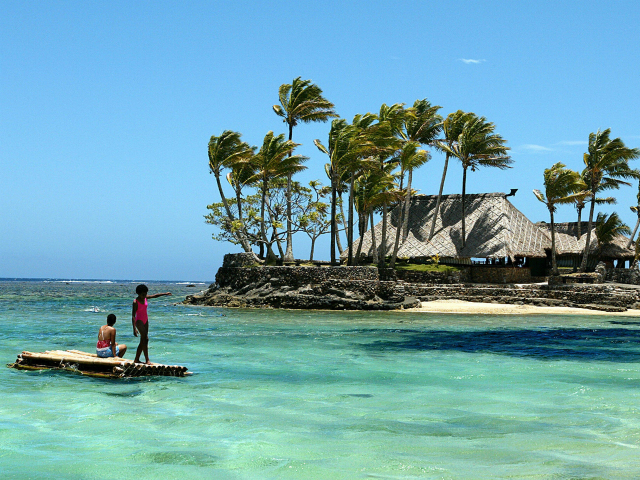Another global warming scare story bites the dust: fragile islands and atolls in the Pacific are not sinking beneath the waves because of global warming. In fact, they are doing just fine.
The bad news (only bad for alarmists, of course) comes in a study by Virginie Duvat of the University of La Rochelle-CNRS, France, titled ‘A global assessment of atoll island planform changes over the past decades’.
It surveyed 30 Pacific and Indian Ocean atolls, including 709 islands, and found that 90 per cent have either remained stable or have grown in the last few decades.
Abstract: Over the past decades, atoll islands exhibited no widespread sign of physical destabilization in the face of sea-level rise. A reanalysis of available data, which cover 30 Pacific and Indian Ocean atolls including 709 islands, reveals that no atoll lost land area and that 88.6% of islands were either stable or increased in area, while only 11.4% contracted. Atoll islands affected by rapid sea-level rise did not show a distinct behavior compared to islands on other atolls. Island behavior correlated with island size, and no island smaller than 10 ha decreased in size. This threshold could be used to define the minimum island size required for human occupancy and to assess atoll countries and territories’ vulnerability to climate change. Beyond emphasizing the major role of climate drivers in causing substantial changes in the configuration of islands, this reanalysis of available data indicates that these drivers explain subregional variations in atoll behavior and within-atoll variations in island and shoreline (lagoon vs. ocean) behavior, following atoll-specific patterns. Increasing human disturbances, especially land reclamation and human structure construction, operated on atoll-to-shoreline spatial scales, explaining marked within-atoll variations in island and shoreline behavior. Collectively, these findings highlight the heterogeneity of atoll situations. Further research needs include addressing geographical gaps (Indian Ocean, Caribbean, north-western Pacific atolls), using standardized protocols to allow comparative analyses of island and shoreline behavior across ocean regions, investigating the role of ecological drivers, and promoting interdisciplinary approaches. Such efforts would assist in anticipating potential future changes in the contributions and interactions of key drivers.
This will come as no surprise to climate realists. As Nils-Axel Mörner, among others, has been saying for years there is no danger that that the islands of the Indian Ocean and Pacific are going to be inundated as a result of “global warming.” First, sea levels have been rising at the same steady rate for centuries and show no sign of acceleration. Secondly, as Darwin understood as long ago as the 1830s, when the sea rises coral grows with it.
But for decades, the sinking Maldives/drowning Tuvalu scare story has formed a key part of the alarmists’ litany of climate-change-induced woes.
It even prompted the United Nations, in one of its more absurd flights of fancy, to predict that by 2010 there would be 50 million climate refugees – driven from their homes by rising sea levels and shrinking fresh water supplies.
The actual figure for the number of climate refugees in 2010 was zero.
Tuvalu remains inhabited and has lost no land to rising sea levels.
The Maldives continues to build more airports to support its growing tourist industry.
None of the alarmists who have attacked Nils-Axel Mörner and his colleagues for speaking the truth about rising sea levels and climate change has apologised or suffered reputational damage. It’s about time they did.

COMMENTS
Please let us know if you're having issues with commenting.